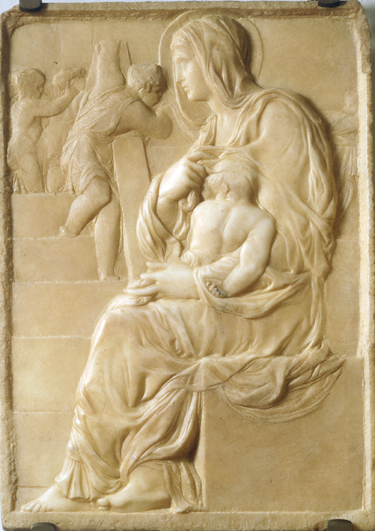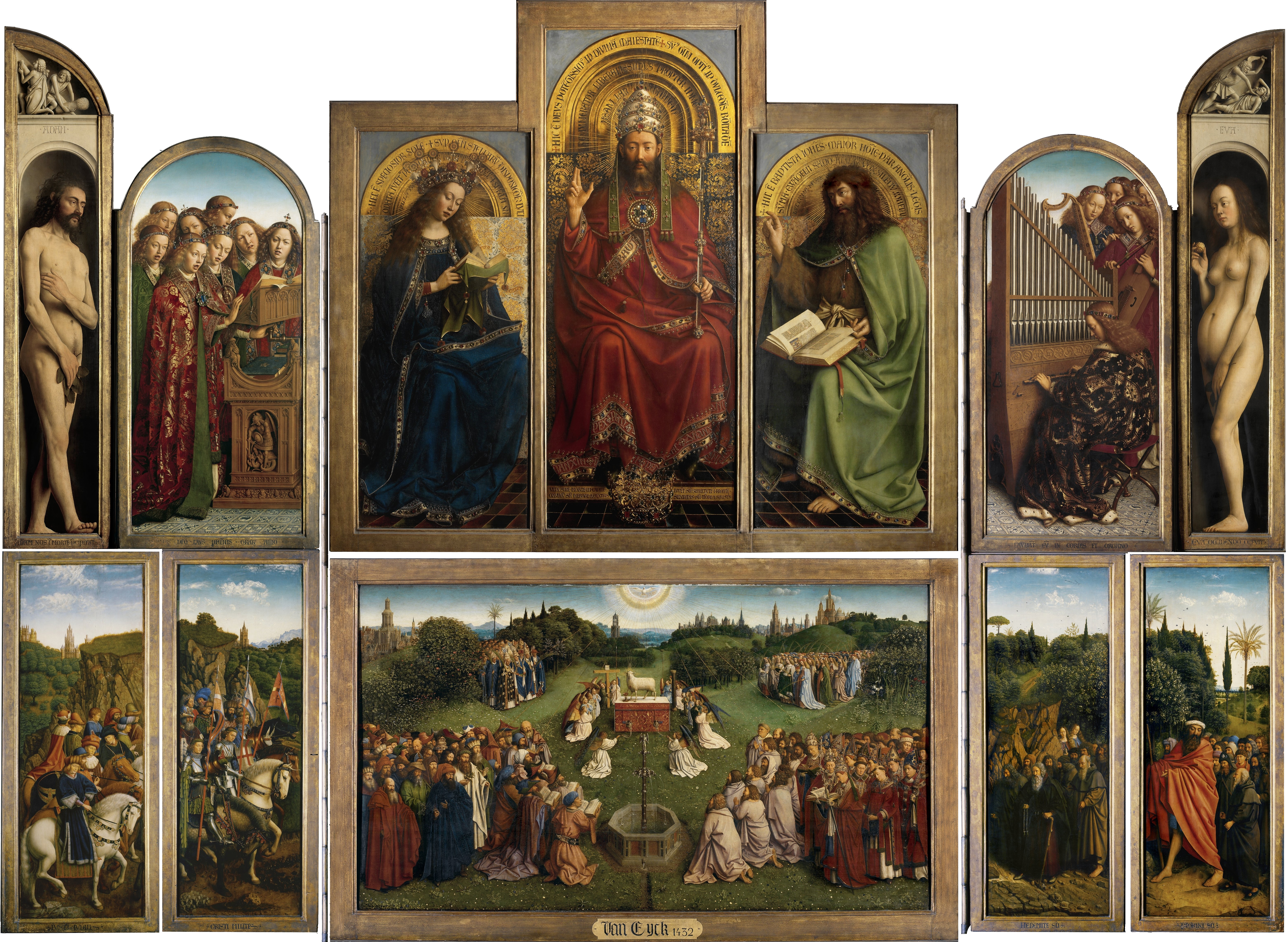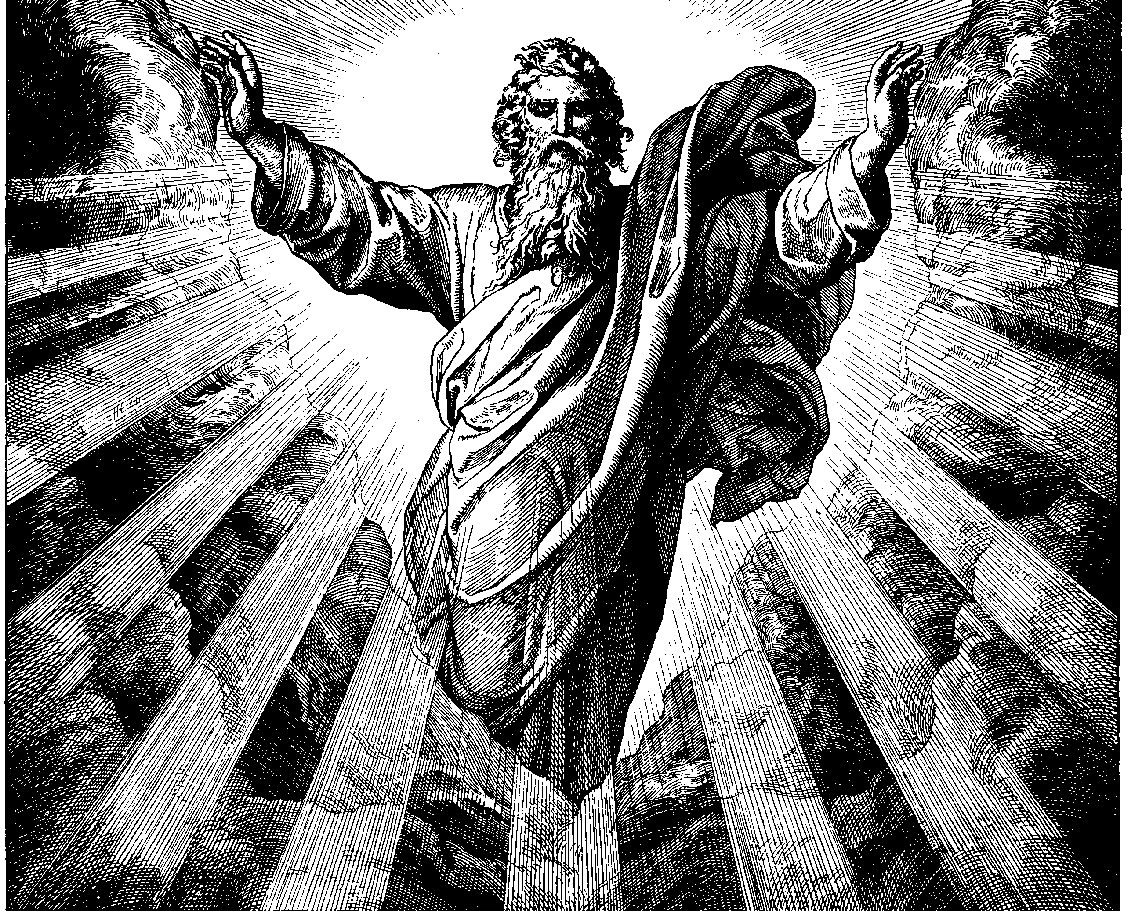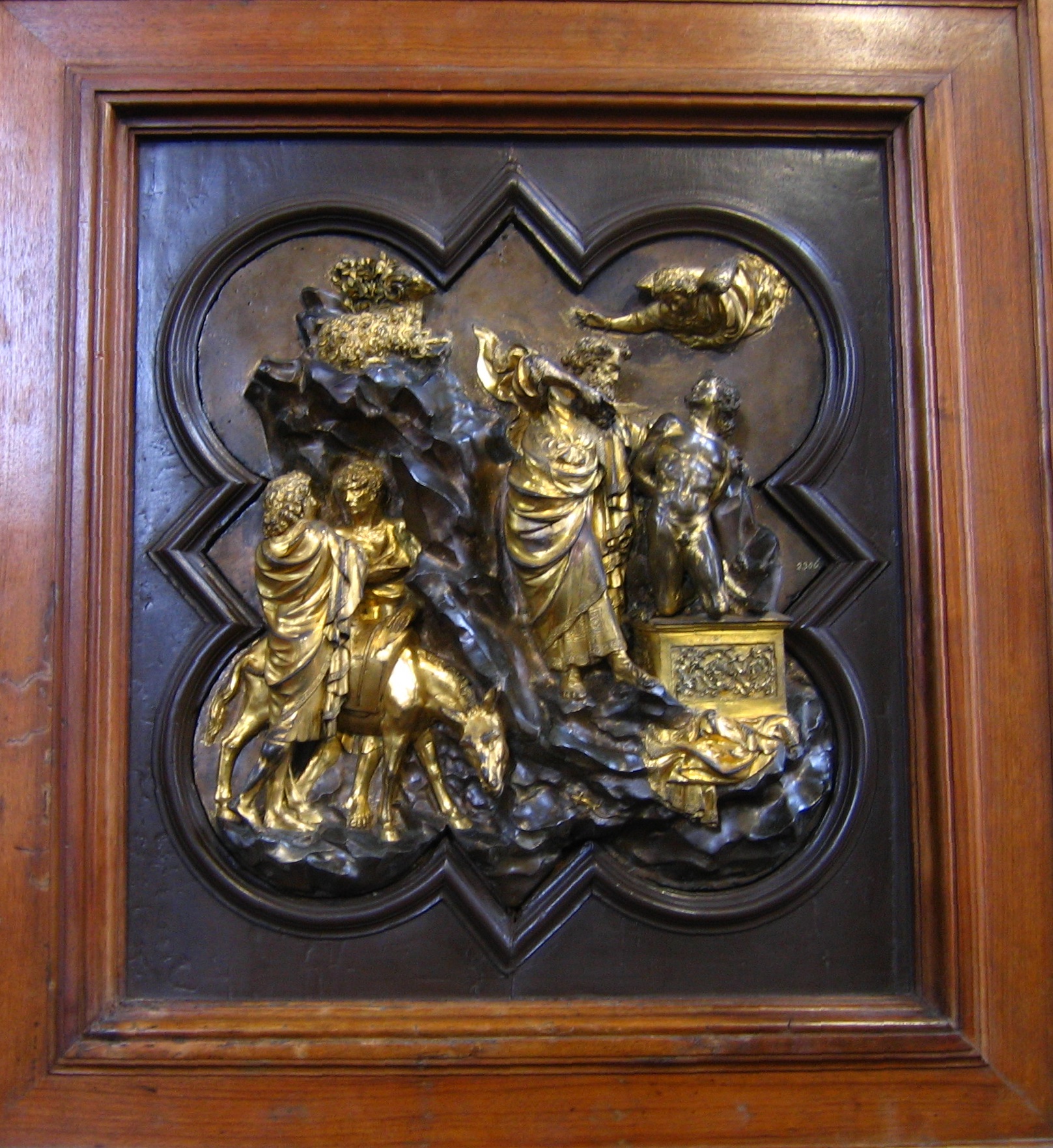|
Transfiguration (Raphael)
''The Transfiguration'' is the last painting by the Italian High Renaissance Old Master, master Raphael. Cardinal Giulio de Medici – who later became Pope Clement VII (in office: 1523–1534) – commissioned the work, conceived as an altarpiece for Narbonne Cathedral in France; Raphael worked on it in the years preceding his death in 1520. The painting exemplifies Raphael's development as an artist and the culmination of his career. Unusually for a depiction of the Transfiguration of Jesus in Christian art, the subject is combined with the next episode from the Gospels (the healing of a possessed boy) in the lower part of the painting. The work is now in the Vatican Museums#Pinacoteca Vaticana, Pinacoteca Vaticana in the Vatican City. From the late 16th century until the early 20th century, various commentators regarded it as the most famous oil painting in the world. History of the painting By December 1517, the latest date of commission, Pope Clement VII, Cardinal Giulio de ... [...More Info...] [...Related Items...] OR: [Wikipedia] [Google] [Baidu] |
Raphael
Raffaello Sanzio da Urbino (; March 28 or April 6, 1483April 6, 1520), now generally known in English as Raphael ( , ), was an Italian painter and architect of the High Renaissance. List of paintings by Raphael, His work is admired for its clarity of form, ease of composition, and visual achievement of the Platonism in the Renaissance, Neoplatonic ideal of human grandeur. Together with Leonardo da Vinci and Michelangelo, he forms the traditional trinity of great masters of that period. His father Giovanni Santi was court painter to the ruler of the small but highly cultured city of Urbino. He died when Raphael was eleven, and Raphael seems to have played a role in managing the family workshop from this point. He probably trained in the workshop of Pietro Perugino, and was described as a fully trained "master" by 1500. He worked in or for several cities in north Italy until in 1508 he moved to Rome at the invitation of Pope Julius II, to work on the Apostolic Palace at Vatican ... [...More Info...] [...Related Items...] OR: [Wikipedia] [Google] [Baidu] |
Michelangelo
Michelangelo di Lodovico Buonarroti Simoni (6March 147518February 1564), known mononymously as Michelangelo, was an Italian sculptor, painter, architect, and poet of the High Renaissance. Born in the Republic of Florence, his work was inspired by models from classical antiquity and had a lasting influence on Western art. Michelangelo's creative abilities and mastery in a range of artistic arenas define him as an archetypal Renaissance man, along with his rival and elder contemporary, Leonardo da Vinci. Given the sheer volume of surviving correspondence, sketches, and reminiscences, Michelangelo is one of the best-documented artists of the 16th century. He was lauded by contemporary biographers as the most accomplished artist of his era. Michelangelo achieved fame early. Two of his best-known works, the ''Pietà (Michelangelo), Pietà'' and ''David (Michelangelo), David'', were sculpted before the age of 30. Although he did not consider himself a painter, Michelangelo created ... [...More Info...] [...Related Items...] OR: [Wikipedia] [Google] [Baidu] |
William Morrow And Company
William Morrow and Company is an American publishing company founded by William Morrow in 1926. The company was acquired by Scott Foresman in 1967, sold to Hearst Corporation in 1981, and sold to News Corporation (now News Corp) in 1999. The company is now an imprint of HarperCollins. William Morrow has published many fiction and non-fiction authors, including Ray Bradbury, Michael Chabon, Beverly Cleary, Neil Gaiman, Erle Stanley Gardner, B. H. Liddell Hart, Elmore Leonard, Steven Levitt, Steven Pinker, Judith Rossner, and Neal Stephenson. Francis Thayer Hobson was president and later chairman of the board of William Morrow and Company. Morrow authors * Christopher Andersen * Katherine Burdekin * Harriet Brown * Tabitha Brown * Karin Slaughter * Harry Browne * Stephen Brusatte * Meg Cabot * Beverly Cleary * Charles Dickinson * Warren Ellis * Bruce Feiler * Neil Gaiman * David J. Garrow * Nikki Giovanni * John Grogan * Andrew Gross * Jean Guerrero * J ... [...More Info...] [...Related Items...] OR: [Wikipedia] [Google] [Baidu] |
Amadeus Of Portugal
Amadeus of Portugal (Campo Maior, Portugal ca. 1420 – Milan, Duchy of Milan, 10 August 1482), born João de Menezes da Silva, was a Portuguese nobleman who became first a Hieronymite monk, then left that life to become a friar of the Franciscan Order. Later he became a reformer of that religious order, which led to his founding of a distinct branch of the Friars Minor that was named after him, but later suppressed by the Pope in order to unite them into one great family of Friars Minor Observants (1568). His ''Apocalypsis nova'', which contained prophecies of a pope, the "Angelic Pastor", who would work with an emperor to restore harmony in the church and the world, was influential well into the next century, in Rome and the monarchies of Spain and Portugal. Life and church He was born João de Menezes da Silva in 1420 in Campo Maior, Portugal, the youngest of the eleven children of Rui Gomes da Silva, the first alcaide of Campo Maior, on the border of Castile and Portuga ... [...More Info...] [...Related Items...] OR: [Wikipedia] [Google] [Baidu] |
Pentimenti
In painting, a ; from the verb , meaning 'to repent'; plural ''pentimenti'') is "the presence or emergence of earlier images, forms, or strokes that have been changed and painted over". Sometimes the English form "pentiment" is used, especially in older sources. Significance ''Pentimenti'' may show that a composition originally had an element, for example, a head or a hand, in a slightly different place, or that an element no longer in the final painting was originally planned. The changes may have been done in the underdrawing of the painting, or by the visible layers of paint differing from the underdrawing, or by the first painted treatment of the element having been over-painted. Some ''pentimenti'' have always been visible on the final painting with careful inspection; others are revealed by the increasing transparency that some paint acquires after several centuries. Others, especially in the underdrawing, can only be seen with modern methods such as X-rays and infrare ... [...More Info...] [...Related Items...] OR: [Wikipedia] [Google] [Baidu] |
Modello For The Transfiguration Of Christ
A modello (plural modelli), from Italian, is a preparatory study or model, usually at a smaller scale, for a work of art or architecture, especially one produced for the approval of the commissioning patron. The term gained currency in art circles in Tuscany in the fourteenth century. Modern definitions in reference works vary somewhat. Alternative and overlapping terms are "oil sketch" (''schizzo'') and "cartoon" for paintings, tapestry, or stained glass; maquette, plastico or bozzetto for sculpture or architecture; and architectural model. Background Though in Gothic figural arts bishops and abbots are often represented carrying small simulacra of buildings they had constructed – "models" in the familiar modern sense – ''modello'' is only used of pieces which pre-date the finished work, and were at least in part produced by the main artist involved. The less frequently found term ricordo (Italian for "record" or "memory") means a similar piece produced as a small copy ''a ... [...More Info...] [...Related Items...] OR: [Wikipedia] [Google] [Baidu] |
Advent
Advent is a season observed in most Christian denominations as a time of waiting and preparation for both the celebration of Jesus's birth at Christmas and the return of Christ at the Second Coming. It begins on the fourth Sunday before Christmas, often referred to as Advent Sunday. Advent is the beginning of the liturgical year in Western Christianity. The name comes from Latin ('coming; arrival'), translating the Greek from the New Testament, originally referring to the Second Coming. The season of Advent in the Christian calendar anticipates the "coming of Christ" from three different perspectives: the physical nativity in Bethlehem, the reception of Christ in the heart of the believer, and the eschatological Second Coming. Practices associated with Advent include Advent calendars, lighting an Advent wreath, praying an Advent daily devotional, erecting a Chrismon tree, lighting a Christingle, as well as other ways of preparing for Christmas, such as setting up Ch ... [...More Info...] [...Related Items...] OR: [Wikipedia] [Google] [Baidu] |
Altarpiece
An altarpiece is a painting or sculpture, including relief, of religious subject matter made for placing at the back of or behind the altar of a Christian church. Though most commonly used for a single work of art such as a painting or sculpture, or a set of them, the word can also be used of the whole ensemble behind an altar, otherwise known as a reredos, including what is often an elaborate frame for the central image or images. Altarpieces were one of the most important products of Christian art especially from the late Middle Ages to the era of Baroque painting. The word altarpiece, used for paintings, usually means a framed work of panel painting on wood, or later on canvas. In the Middle Ages they were generally the largest genre for these formats. Murals in fresco tend to cover larger surfaces. The largest painted altarpieces developed complicated structures, especially winged altarpieces with hinged side wings that folded in to cover the main image, and were painted o ... [...More Info...] [...Related Items...] OR: [Wikipedia] [Google] [Baidu] |
God The Father
God the Father is a title given to God in Christianity. In mainstream trinitarian Christianity, God the Father is regarded as the first Person of the Trinity, followed by the second person, Jesus Christ the Son, and the third person, God the Holy Spirit. Since the second century, Christian creeds included affirmation of belief in "God the Father ( Almighty)", primarily in his capacity as "Father and creator of the universe". Christians take the concept of God as the father of Jesus Christ metaphysically further than the concept of God as the creator and father of all people, as indicated in the Apostles' Creed where the expression of belief in the "Father almighty, creator of heaven and earth" is immediately, but separately followed by in "Jesus Christ, his only Son, our Lord", thus expressing both senses of fatherhood. Christianity Overview In much of modern Christianity, God is addressed as the Father, in part because of his active interest in human affairs on the ... [...More Info...] [...Related Items...] OR: [Wikipedia] [Google] [Baidu] |
Giulio Romano
Giulio Pippi ( – 1 November 1546), known as Giulio Romano and Jules Romain ( , ; ), was an Italian Renaissance painter and architect. He was a pupil of Raphael, and his stylistic deviations from High Renaissance classicism help define the sixteenth-century style known as Mannerism. Giulio's drawings have long been treasured by collectors; contemporary prints of them engraved by Marcantonio Raimondi were a significant contribution to the spread of sixteenth-century Italian style throughout Europe. Biography Giulio Pippi was born in Rome and he began his career there as a young assistant to the leading painter and architect Raphael. He became an important member of Raphael's large team working on the frescos in the Raphael Rooms and Vatican loggias using designs by Raphael and, later painting a group of figures in the '' Fire in the Borgo'' fresco. He also collaborated on the decoration of the ceiling of the Villa Farnesina. Despite his relative youth, increasingly ... [...More Info...] [...Related Items...] OR: [Wikipedia] [Google] [Baidu] |
Modello
A modello (plural modelli), from Italian, is a preparatory study or model, usually at a smaller scale, for a work of art or architecture, especially one produced for the approval of the commissioning patron. The term gained currency in art circles in Tuscany in the fourteenth century. Modern definitions in reference works vary somewhat. Alternative and overlapping terms are " oil sketch" (''schizzo'') and "cartoon" for paintings, tapestry, or stained glass; maquette, plastico or bozzetto for sculpture or architecture; and architectural model. Background Though in Gothic figural arts bishops and abbots are often represented carrying small simulacra of buildings they had constructed – "models" in the familiar modern sense – ''modello'' is only used of pieces which pre-date the finished work, and were at least in part produced by the main artist involved. The less frequently found term ricordo (Italian for "record" or "memory") means a similar piece produced as a small copy ' ... [...More Info...] [...Related Items...] OR: [Wikipedia] [Google] [Baidu] |
Paragone
Paragone (, meaning ''comparison''), was a debate during the Italian Renaissance in which painting and sculpture (and to a degree, architecture) were each championed as forms of art superior and distinct to each other. While other art forms, such as architecture and poetry existed in the context of the debate, painting and sculpture were the primary focus of the debate. The debate extended beyond the fifteenth century and even influences the discussion and interpretation of artworks that may or may not have been influenced by the debate itself. A comparable question, generally posed less competitively, was known as ''ut pictura poesis'' (a quote from Horace), comparing the qualities of painting and poetry. The debate The debate began around the 15th century. Leonardo da Vinci's A Treatise on Painting, treatise on painting, observing the difficulty of painting and supremacy of sight, is a notable example of literature on the subject. Benedetto Varchi, Bendetto Varchi further s ... [...More Info...] [...Related Items...] OR: [Wikipedia] [Google] [Baidu] |











